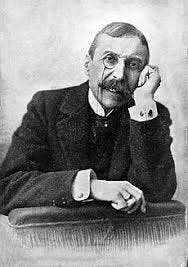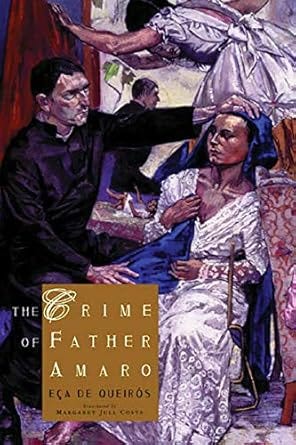“Others even dreamed of careers outside the Church: they hoped to become soldiers and to walk the paved streets with sword clinking, or else take up the good life of the farmer, out and about by dawn, wearing a wide-brimmed hat and mounted on a good horse, trotting along the roads, giving orders to those working on threshing-floors piled high with grain, or dismounting at the door of wine cellars.”
I was until recently under the impression — it makes me wince even to type out — that there was no such thing as a good romance novel. Good crime fiction, definitely. Good sci-fi, yes, once you swept aside the mountains of interplanetary gobbledygook. But every romance novel I’d ever tried had seemed to me the literary equivalent of the kind of movie you watch without sound on a stranger’s airplane seatback-TV — implausibly attractive people falling into un-rumpled beds under Tuscan suns.
This smug certainty was, I realized only the other week, held aloft by an error of logic so basic that I hesitate to admit it in front of our AI overlords. Having decided that romance novels were bad, I had, whenever I happened to encounter a good romance novel, defined it out of the romance category altogether. So — Anna Karenina, Jane Eyre, Endless Love; these were literature! Those heaving bosoms, those forbidden liaisons, they were incidental. If a book gave its chapter headings in roman numerals, if it had been mentioned in The New York Review of Books, then it could not possibly belong on the same shelf as Twilight.
The novel that finally revealed my folly — the one that made me sit up in my rumpled bed and think, Holy shit, I am reading and loving a romance novel! — is Eça de Queirós’ The Crime of Father Amaro. It’s a Portuguese novel from 1875, and between that and the fact that I just had to pause for three minutes to figure out how to type its author’s name, I can feel you moving away from me. But stare deep into my smoldering eyes: you will love it.
I read it in the middle of the night; I read it when I was waiting for the pasta water to boil; I read it when I should have been helping my daughter with her times tables (Just ask Siri!). I read it with a feeling that I’d almost forgotten was in my repertoire: I wanted desperately to know how it would end.
The book is about a youngish priest who moves to a small town, gets taken in by a devout and bustling family, and promptly falls in love with their twenty-three-year-old daughter. The prose is far more chaste than the priest (never has such erotic voltage been extracted from knee-contact) but de Queirós expertly maintains the necessary fever.
He remembered her foot, the little flash of stocking he had seen when she jumped over the puddles at the farm; and his inflamed curiosity climbed all the way up the curve of her leg to her breasts, past beauties he could but imagine . . . God, how he loved the wretched girl! But he could not have her! And yet any other ugly, stupid fellow could go to Rua da Misericórdia and ask for her hand in marriage, could walk into the Cathedral and say to him: ‘Father, marry us’, and then, protected by Church and State, could kiss those arms and those breasts. But he could not!
What makes the book great, though, is the skill with which de Queirós conjures all the parts of life that aren’t concealed by skirts and cassocks. Sex and romance are, after all, just the specials on the wide and numbing menu of life’s restaurant — we spend less time tending to them, in the end, than we do commuting or bathing. And it’s life that de Queirós is good at, the in-between bits that establish the background fineness — the textural grain — we’ll bring with us into the bedroom.
Here he is describing Amaro’s indifferent stint in a seminary:
Others even dreamed of careers outside the Church: they hoped to become soldiers and to walk the paved streets with sword clinking, or else take up the good life of the farmer, out and about by dawn, wearing a wide-brimmed hat and mounted on a good horse, trotting along the roads, giving orders to those working on threshing-floors piled high with grain, or dismounting at the door of wine cellars.
An ordinary novelist would have ended that sentence after the good life of the farmer. By that point we know what the seminarians are dreaming of — the excitement of the battlefield or the comfort of the farm — and we’re ready to move on to the next bit of school-day scene-setting. But de Queirós isn’t ready; his pen is barely warm.
Because having mentioned a farmer, he can’t now help but to animate him: wearing a wide-brimmed hat… giving orders to those working on threshing-floors… And my favorite: dismounting at the door of wine cellars. These vivid miniatures — these scenes more specific than the structure demands (I would bet a sackful of Portuguese reals that de Queirós could circle this ostensibly generic wine cellar on a map) — are like blades of grass pushing up between paving stones. Here is how much life he can cram into a single moment of classroom daydreaming. Of course he can make the touch of a leg feel worth going to hell over.




Added to my reading list...which never seems to grow shorter...
Ditto the preceding comment.